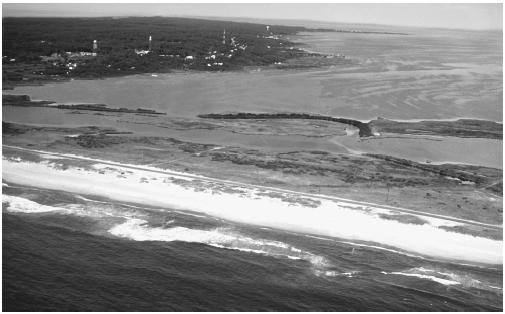|
This section contains 199 words (approx. 1 page at 300 words per page) |
An elongated island that lies parallel to, but mostly separate from, a coastline. Barrier islands are composed of sediments, mainly sand, deposited by longshore currents, wind, and wave action. Both marine and terrestrial plants and animals find habitat on barrier islands or along their sandy beach shorelines. These islands also protect coastal lagoons from ocean currents and waves, providing a warm, quiet environment for species that cannot tolerate more violent wind and wave conditions. In recent decades these linear, sandy islands, with easy access from the mainland, have proven a popular playground for vacationers. These visitors now pose a significant threat to breeding birds and other coastal species. Building houses, roads, and other disruptive human activities can destabilize dunes and expose barrier islands to disastrous storm damage. In some cases, whole islands are swept away, exposing protected lagoons and delicate wetlands to further damage. Major barrier island formations in North America include those along the eastern coasts of the mid-Atlantic states, Florida, and the Gulf of Mexico.
 Located parallel to coastlines, Barrier islands attract visitors that now pose a significant threat to the birds and other coastal species living there. (JLM Visuals. Reproduced by permission.)
Located parallel to coastlines, Barrier islands attract visitors that now pose a significant threat to the birds and other coastal species living there. (JLM Visuals. Reproduced by permission.)
|
This section contains 199 words (approx. 1 page at 300 words per page) |


